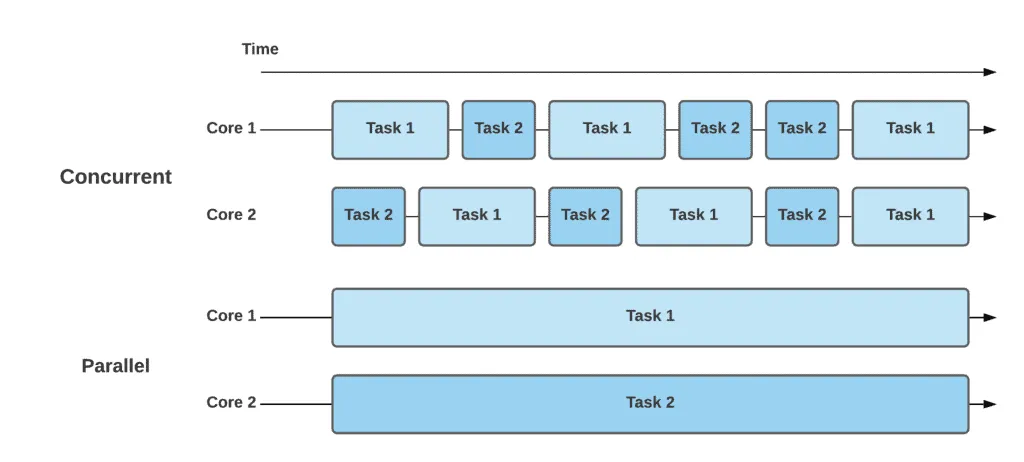In the realm of software development, keeping pace with technological advancements is paramount. Among the key concepts that developers must grasp are concurrency and parallelism. These concepts, although intertwined, serve distinct purposes and are indispensable in modern software engineering.
Concurrency refers to a system’s capability to handle multiple tasks concurrently. It allows different parts of a program to execute independently and simultaneously, a crucial aspect in the era of multi-core processors and distributed systems. With concurrency, developers can design applications that cater to multiple users, processes, or events concurrently, thereby enhancing performance and responsiveness.
Parallelism, conversely, involves executing multiple tasks simultaneously by breaking them down into smaller, manageable sub-tasks. Unlike concurrency, which deals with managing multiple tasks, parallelism focuses on executing these tasks concurrently to expedite results. It proves invaluable for tasks that can be subdivided into smaller units of work, such as data processing, image rendering, and scientific computations.

Understanding why developers need to grasp concurrency and parallelism is essential:
- Performance Enhancement: Concurrency and parallelism are instrumental in optimizing application performance. Leveraging the capabilities of multi-core processors and distributed systems, developers can devise software that efficiently utilizes available resources, leading to swifter execution and enhanced scalability.
- Enhanced Responsiveness: Concurrency empowers developers to craft responsive applications capable of handling multiple tasks simultaneously without impeding other processes. This attribute is particularly vital in user-centric applications where responsiveness directly impacts user experience.
- Scalability: Building scalable applications necessitates employing concurrency and parallelism to efficiently manage increasing workloads. By distributing tasks across multiple threads or processes, developers can ensure their applications scale seamlessly to accommodate growing user bases and demands.
- Resource Optimization: Effective resource utilization is imperative for maximizing application performance and scalability. Concurrency and parallelism enable developers to judiciously allocate CPU, memory, and other resources by executing tasks concurrently and managing resource allocation adeptly.
- Future Preparedness: With the ubiquity of multi-core processors and distributed computing environments, understanding concurrency and parallelism is imperative for developers. Mastery of these concepts future-proofs developers’ skills, ensuring they remain competitive in an ever-evolving job market.
- Troubleshooting Proficiency: Proficiency in concurrency and parallelism is indispensable for troubleshooting complex software issues. Understanding how various parts of a program interact concurrently facilitates the identification and resolution of potential race conditions, deadlocks, and other concurrency-related bugs.
In essence, concurrency and parallelism are foundational concepts that every developer should master. Whether developing web applications, mobile apps, or enterprise software, proficiency in these areas can significantly enhance application performance, scalability, and responsiveness. By investing time and effort into learning concurrency and parallelism, developers can unlock new opportunities and maintain a competitive edge in the dynamic landscape of software development.
Fill-in the form below to reach out to us with your project👇




